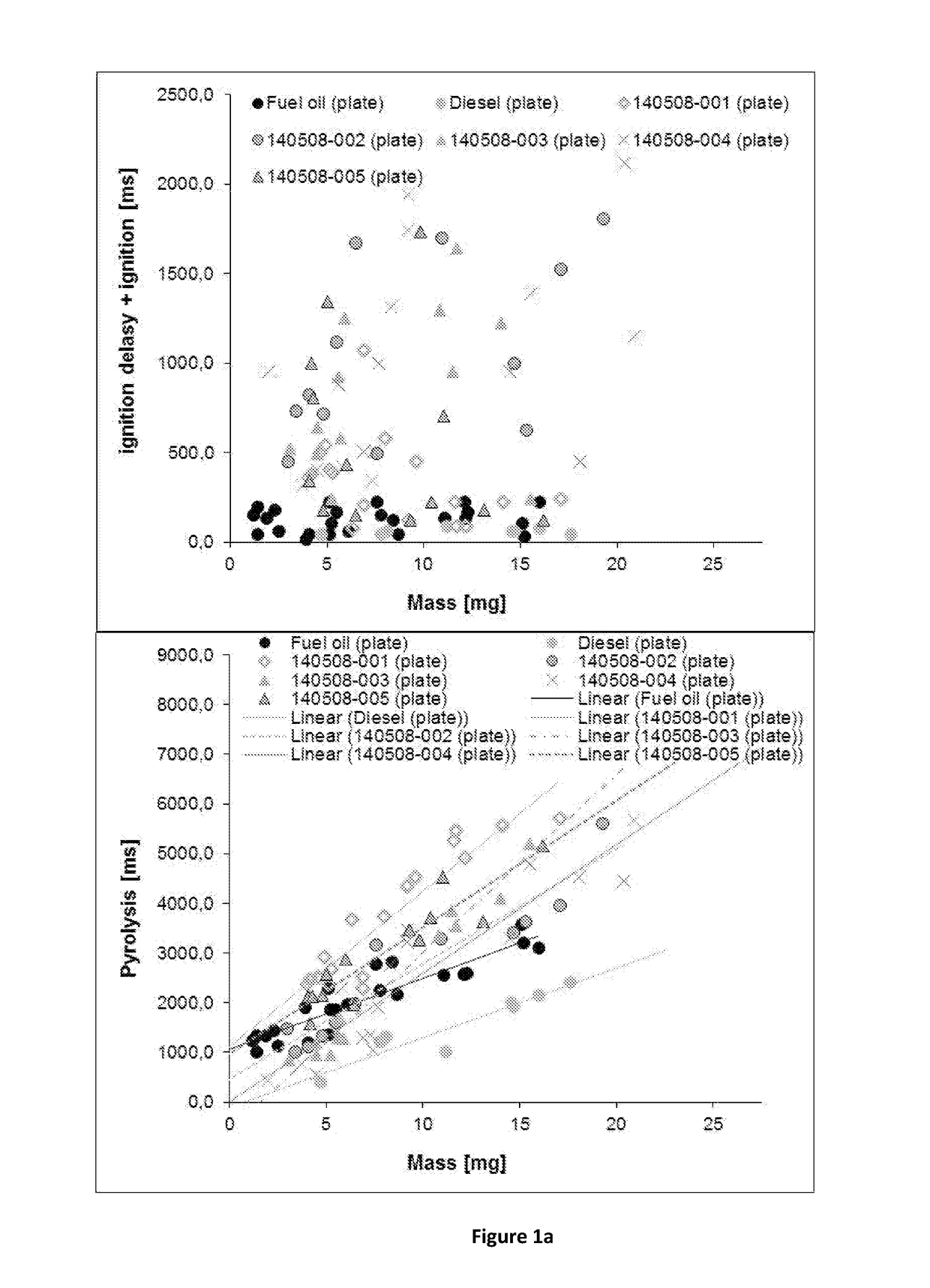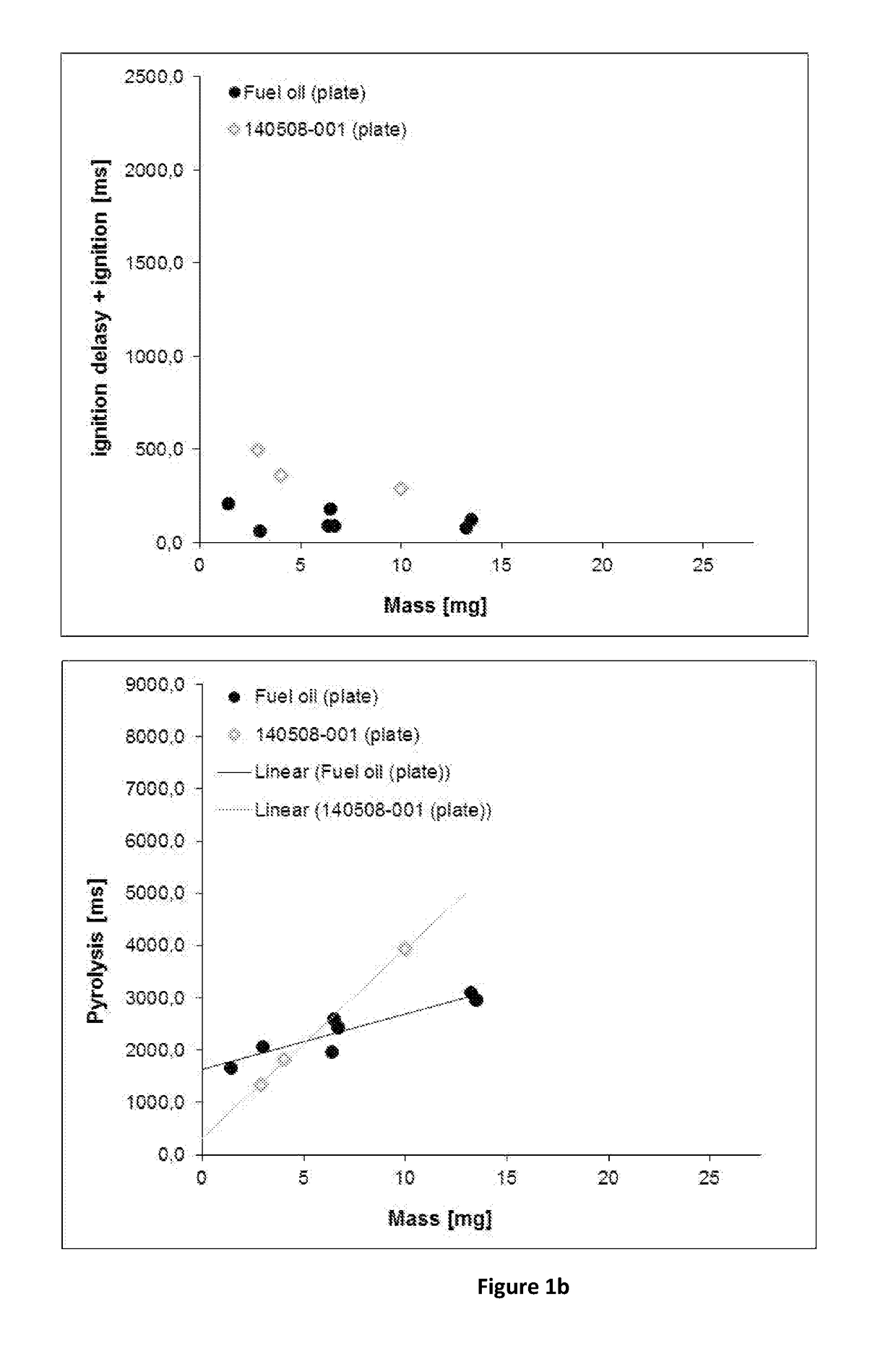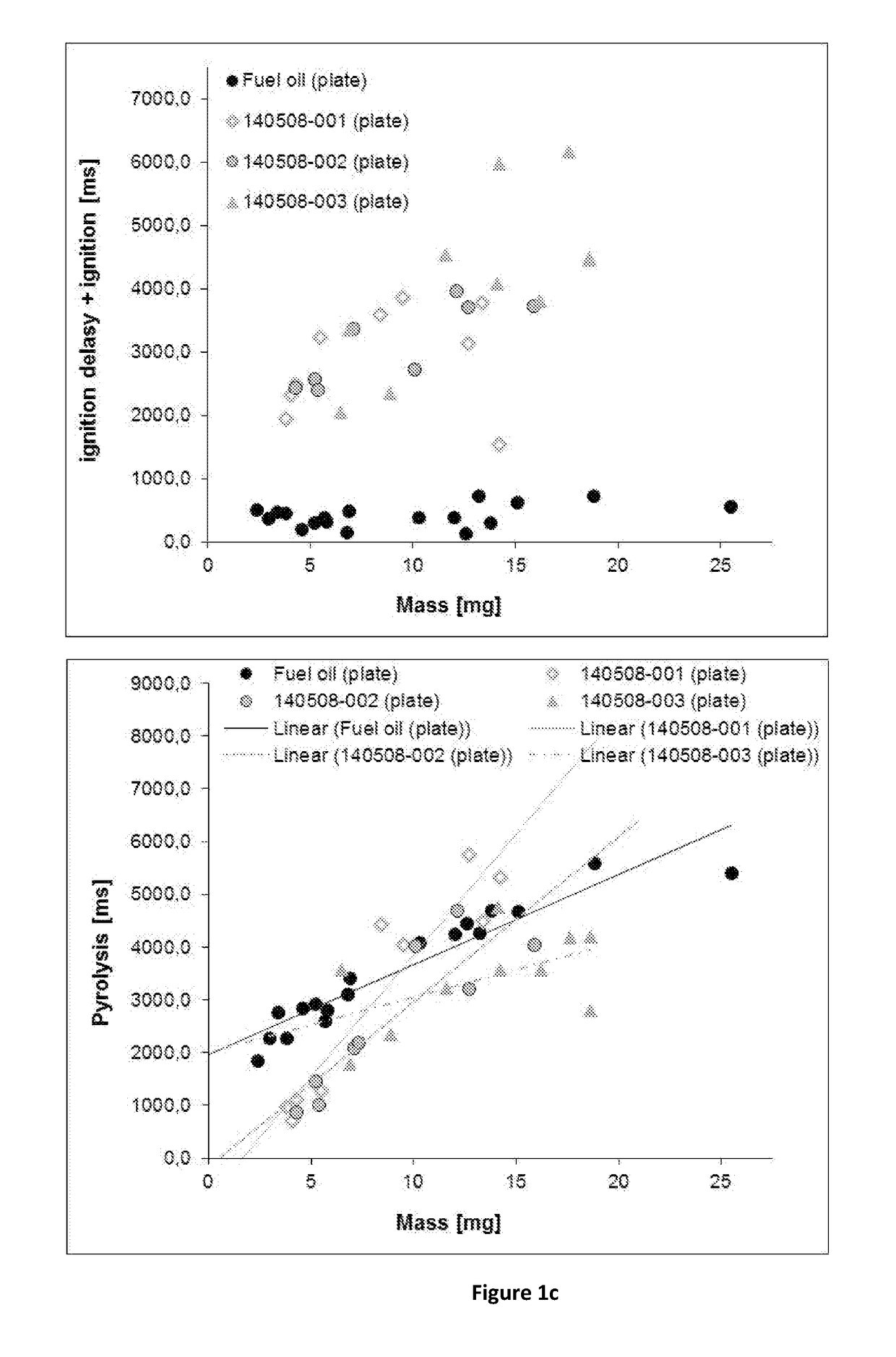Fluid composition comprising lignin
- Summary
- Abstract
- Description
- Claims
- Application Information
AI Technical Summary
Benefits of technology
Problems solved by technology
Method used
Image
Examples
example 1
[0276]This example illustrates a preliminary experiment relating to the manufacture of a fluid composition according to a first aspect of the present invention.
[0277]A lignin component obtained from a second generation bioethanol manufacturing plant subjecting wheat straw to a hydrothermal pretreatment followed by an enzymatic hydrolysis was comminuted, dried and grinded in order to obtain a powder. The lignin component had a dry matter content of 95-97%.
[0278]This lignin component was exposed to moisture by wetting in order to obtain a lignin component having a dry matter content of 65% so as to mimic the wet lignin component originally obtained in the manufacturing process. 144.06 g of this lignin component together with 19.66 g diesel and 35.26 g water and 1.0 g Lutensol AP 10 dispersing agent from BASF was used for this fluid composition.
[0279]In a separate container 35.26 g water, 19.66 g diesel oil and 1 g Lutensol AP 10 was homogenized using the Ultra Turrax high speed mixer ...
example 2
[0284]This example illustrates a second preliminary experiment relating to the manufacture of a fluid composition according to the first aspect of the present invention.
[0285]Example 1 was repeated with the same ingredients in the same amounts with the exception that in example 2 all the ingredients were mixed together.
[0286]The resulting fluid composition resembled that of example 1 with respect to stability and viscosity.
example 3
[0287]This example illustrates a third preliminary experiment relating to the manufacture of a fluid composition according to the first aspect of the present invention.
[0288]Example 1 was repeated with the same ingredients in the same amounts with the exception that in example 3 no dispersing agent was used.
[0289]The resulting fluid composition resembled that of example 1 with respect to stability and viscosity.
[0290]The examples show that it is possible to obtain a stable fluid composition according to the first aspect of the present invention starting from a lignin component originating from a biorefinery of a lignocellulosic biomass and using diesel as the organic substance of the liquid fraction of the fluid.
[0291]Most surprisingly, the examples demonstrate that it is possible to obtain a stable fluid composition according to the first aspect of the present invention starting from a lignin component originating from a biorefinery of a lignocellulosic biomass and using diesel as ...
PUM
| Property | Measurement | Unit |
|---|---|---|
| Temperature | aaaaa | aaaaa |
| Temperature | aaaaa | aaaaa |
| Temperature | aaaaa | aaaaa |
Abstract
Description
Claims
Application Information
 Login to View More
Login to View More - R&D
- Intellectual Property
- Life Sciences
- Materials
- Tech Scout
- Unparalleled Data Quality
- Higher Quality Content
- 60% Fewer Hallucinations
Browse by: Latest US Patents, China's latest patents, Technical Efficacy Thesaurus, Application Domain, Technology Topic, Popular Technical Reports.
© 2025 PatSnap. All rights reserved.Legal|Privacy policy|Modern Slavery Act Transparency Statement|Sitemap|About US| Contact US: help@patsnap.com



